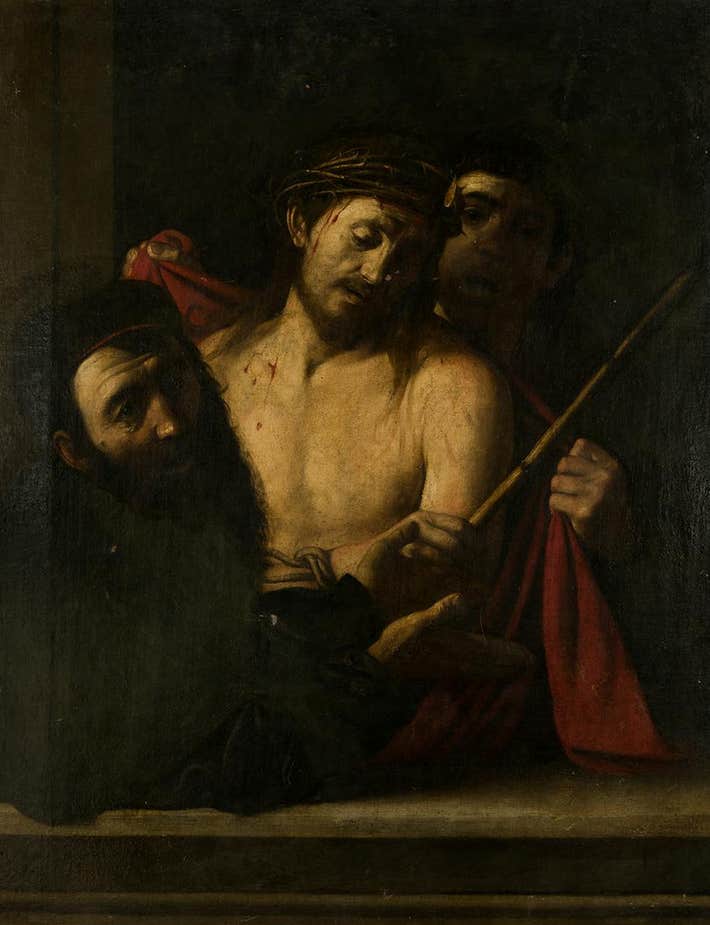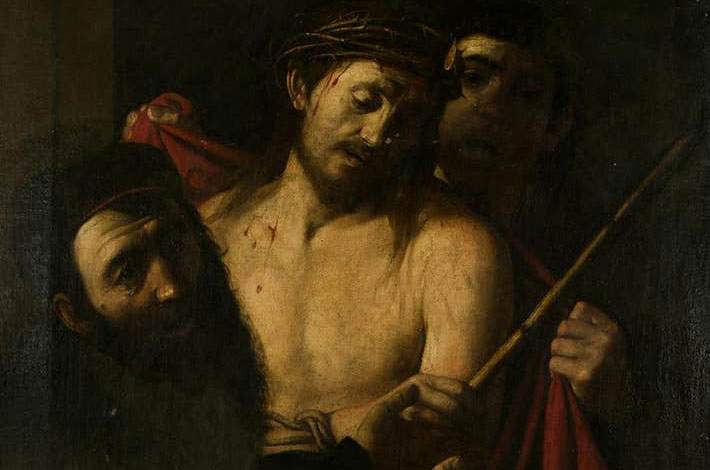Caravaggio ’s (Michelangelo Merisi; Milan, 1571 - Porto Ercole, 1610) name is circulating for an Ecce Homo that was about to go up for auction in Madrid, in a sale at Ansorena House: in the sales session catalog, it was listed as aCoronation of Thorns from the circle of José de Ribera, with an estimate of just 1,500 euros. Pushing the name of the great Lombard painter is, at the moment, one of the leading experts on Merisi, art historian Maria Cristina Terzaghi, who curated the exhibition Caravaggio in Naples held at the Museo Nazionale di Capodimonte in 2019.
“The purple cloak with which Christ is covered has the same compositional value as the red of the Salome in the Prado in Madrid,” she explained to Repubblica. “This work has a deep connection with the paintings drawn up at the beginning of the Neapolitan sojourn.” According to the scholar, the figure of Pontius Pilate denotes similarities with the Saint Peter Martyr of the Madonna del Rosario in the Kunsthistorisches Museum in Vienna. Contrary, however, is another Caravaggio expert, Nicola Spinosa, who thus reports to Corriere della Sera, “It is not Caravaggio; it is thought that it could be because the figure in the foreground replicates the Ecce homo of the Prato Museum attributed to Caravaggio by Mina Gregori and of which there is a copy. In my opinion the painting is by a high-quality Caravaggesque, rather than Ribera. You cannot name names of this importance; if it were by Ribera its quotation would start from 200,000 euros.” Vittorio Sgarbi spoke in favor.
The lot, number 229, has been withdrawn: the Spanish state has placed the lien and consequently will be able to exercise, according to its own laws, the right of first refusal in order to acquire it (the Prado seems to be in the front row to grab the painting). According to Dagospia reports, it was the two dealers Marco Voena and Fabrizio Moretti who “scouted out” the painting that was about to be sold by Ansorena, and the rumors that began to circulate among dealers and art historians led the auction house to withdraw the lot.
It is known from documents that Caravaggio painted an Ecce Homo in 1605 for Cardinal Massimo Massimi, and a painting withEcce Homo as its subject appears, in 1631, in the inventory of the collection of Juan de Lezcano, Spanish ambassador to the Holy See. The work is recorded in Italy again in 1657, after which, in 1659, it ends up in Spain and traces of it are lost. The only known Ecce Homo that experts have attributed to Caravaggio is the one preserved in Genoa, in Palazzo Bianco, around which, moreover, a conference was recently held in Genoa itself. The Genoese work first appeared in 1929, as a “copy from Lionello Spada.” It was then first attributed to Caravaggio in 1954 by Caterina Marcenaro and Roberto Longhi, after a restoration conducted starting in 1953 by Pico Cellini had restored it to a state of optimal legibility. Not all critics have agreed, however, in referring the Palazzo Bianco painting to Merisi.
At the 2019 conference in Genoa, Terzaghi herself had mentioned that two hypotheses have been formulated in the past for the GenoeseEcce Homo: one that links it to the commissioning of the Ligurian Giannettino Doria, who was elected bishop of Palermo in 1609 (this is because all copies of the GenoeseEcce Homo are found in Sicily, reasoning that it is highly likely that the original passed through the island at some point in history: moreover, we know from documents that an agent of Marcantonio Doria, Lamberto Massa, had an unidentified Ecce Homo in Naples), and the other that instead links it to Lezcano’sEcce Homo. “I was very convinced,” Terzaghi had said, "by the hypothesis of linkingEcce Homo to Giannettino Doria’s commissioning and, as Francesca Cappelletti had already said, disengaging it from the dating to 1605. Antonio Vannugli argued in a very important study that from Massimi’s collection the painting passed into Lezcano’s collection via the Spanish ambassador. This is not necessary: the provenance could be Sicilian and there may not be a Roman passage as assumed by Vannugli. The hypothesis of Giannettino Doria remains standing, but the hypothesis that Lezcano, from Sicily, brought the painting to Naples also remains possible."
The discovery of the Spanish painting (which, from what it seems from the photos, would need cleaning to make it more readable) therefore now opens new questions, and in case the name of Caravaggio can really be formulated for the painting, another problem arises: figuring out whose painting in Genoa and on what occasion it was painted. Now, therefore, the floor passes to the rest of the scientific community, which will pronounce on the painting. More news and updates will follow in the coming hours.
Pictured is the painting (17th century, oil on canvas, 111 x 86 cm)
 |
 |
| Spain, Caravaggio's name is mentioned for an Ecce Homo that was about to go to auction for 1,500 euros |
Warning: the translation into English of the original Italian article was created using automatic tools. We undertake to review all articles, but we do not guarantee the total absence of inaccuracies in the translation due to the program. You can find the original by clicking on the ITA button. If you find any mistake,please contact us.